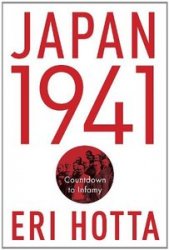Since silver occurred in a number of different forms, reflecting different types of economy, the composition of hoards can be studied to reveal changes in the use of silver over time. In general within the Scandinavian silver economy, it is possible to identify a gradual transition from the ‘display’ to ‘bullion’, and eventually to ‘coin’ economies, as the monetary functions of silver gradually replaced its symbolic role in social contexts and as the exchange of small sums of hack-silver paved the way for coinage. Certainly, datable hoards within Scandinavia show a general trajectory, starting with intact ornaments in the late eighth and early ninth centuries, followed by a period of silver fragmentation in the tenth century, to hoards dominated by coinage in the eleventh century (Hardh 1996, pp. 104-107).
However, silver-handling traditions varied across different regions, and north-west England was sandwiched in between two areas with distinct traditions of silver use, namely Ireland and the Danelaw. In the Danelaw, coins were minted by Scandinavian rulers from the late ninth century, and bullion and coin co-existed until the use of bullion ceased in c. 930. In Ireland, by contrast, bullion continued in use into the second half of the tenth century, and coin production only began in the late 990s (Blackburn 2011, 124-36). To judge from the nature of surviving hoards, the ‘display’ economy also appears to have played a more important role in Ireland relative to the Danelaw, although there is evidence for intact jewellery items even in the latest hoard currently known from Yorkshire (deposited in the Vale of York in c. 928) (Sheehan 2007; Ager and Williams 2011). It would be too simplistic to label Ireland a bullion economy and the Danelaw a coin or dual bullion/coin economy, given evidence for the diverse use of silver in both areas. Nonetheless, it does appear that silver was principally used in different ways in the two regions.
It is thus unsurprising that the composition of hoards from north-west England signals multiple and overlapping silver economies throughout the tenth century, reflecting a combination of influences from east and west. Several early hoards from the region contain significant numbers of coins from York and other Danelaw mints, indicating an exposure to the monetary economy of this region. In addition to containing coin, the Cuerdale and Silverdale hoards also contain large quantities of hack-silver, demonstrating that by c. 900, the concept of the use of silver as a means of payment was well established. Despite this, the silver economy of the North West remained mixed. Hack-silver hoards from the 920s are known from Warton (Lancs) and Flusco Pike (2) (Cumbria). Yet intact ornaments continue to appear in hoards throughout the tenth century, and indeed beyond. Ornament hoards such as that from Flusco Pike (1) (Cumbria), dated on typological grounds to the 920s/30s, bear witness to the survival of the ‘display’ economy (Graham-Campbell 2001, 224). Even the latest hoard of Scandinavian character on record from north-west England, deposited in c. 1025 in Halton Moor (Lancs), retains a display component in the form of a complete silver cup and neck-ring (Graham-Campbell 2011, cat. no. 4.1 and 4.2).
If the transition from the ‘display’ to ‘bullion’ economies is far from clear-cut, the status of coins in the North West is even more complex. Although a conventional coin economy was never established in the region, large numbers of imported coins did reach north-west England in Viking hands. Coins from various mints appear alongside non-numismatic silver in many of the region’s hoards, often in a form that indicates that they have been tested for their silver content. Since coins from different mints had different weights and variable silver contents, it is likely that they passed primarily as bullion, to be weighed out alongside other forms of silver in metal-weight transactions.
However, from the 910s, several coin-only hoards are also recorded. While two of these, from Dean (Cumbria) and Chester, St John’s, contained a mix of coins from multiple mints, a hoard of the same date from ‘Lancashire’ is formed entirely of York issues (Graham-Campbell 2001, pp. 218-19). It is possible that the owner of this hoard accepted the coins as coinage, passing them by tale (that is, by counting them out) rather than by weight. Although removed from the area of jurisdiction in which they were minted, the York coins may have achieved a nominal status as coins, in effect providing a substitute for a local currency.14 Certainly, by the later tenth century, there is evidence that coins in hoards from north-west England were treated differently to silver in other forms. This is perhaps most clearly seen in the recently discovered hoard from Barrow-in-Furness, deposited in c. 955-57. The 79 coins found along with thirteen ingot fragments were preserved either as complete coins or as deliberately cut halves, while only around a quarter had been tested for their silver content. This treatment suggests that the coins were, to an extent, taken at face value, the presence of coin halves speaking of the desire to create smaller units of currency that could still be accommodated alongside complete coins in what were presumably coinbased or mixed bullion/coin transactions. In this way, the hoard would appear to indicate a shift towards the appreciation of coin as coin.




 World History
World History









